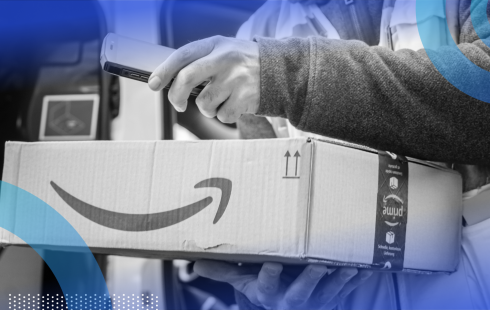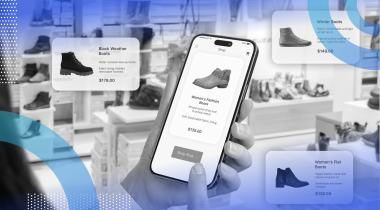E-Commerce.
E-Commerce: Definition, Examples and Trends.
What Is E-Commerce?
E-commerce is the practice of buying and selling goods over the internet. The e-commerce sector has been one of the most transformative industries on the planet because it offers qualities that traditional brick-and-mortar shopping methods often can’t compete with, such as enhanced convenience and personalization. E-commerce has become the bedrock of how many retailers operate and will continue to dictate the way we buy and sell in the future.

E-Commerce Defined
E-commerce refers to the buying and selling of goods and services over the internet. This type of commerce came into popular use in the late 1990s with the rise of Amazon.com and has grown exponentially in recent years, as more people use the internet to purchase items. The prominence of e-commerce is demonstrated by the fact that people now mention Cyber Monday in the same breath as Black Friday during the holiday shopping season.
E-commerce’s ascension is due in part to the increase of convenience and product choice it offers online shoppers, as well as the way it allows new retail businesses to thrive without having to operate a physical storefront.
E-Commerce Definition
The e-commerce industry’s rise has led to the creation of new online brands, new marketplaces that facilitate transactions between buyers and sellers, new sources of revenue for publishers and social media platforms, and a new burgeoning sector of vendors that service e-commerce businesses.
E-commerce has also profoundly changed the shopping experience for consumers worldwide, as people can literally buy products from home with one click — or a voice command — and have it delivered to their doorstep within hours.
E-Commerce Growth
About one-fifth of all retail purchases are made online, which amounts to more than $1 trillion in online retail sales. By 2026, that number is forecast to grow to about 25 percent. For some perspective, consider that in 2004, e-commerce sales only made up two percent of purchases in the United States.
History of E-Commerce
On August 11, 1994, Phil Brandenberger of Philadelphia made the first ever credit card purchase using encryption over the internet, ushering in the modern e-commerce era. The purchase? Sting’s 1993 CD Ten Summoner’s Tales, of course. The seemingly mundane $12.48 purchase set off what would eventually become one of the most transformative industries in the world.
By the turn of the century, notable e-commerce giants had emerged, including Amazon, which started as a bookseller but today accounts for 40 percent of the entire e-commerce market, and eBay, a marketplace platform that facilitates peer-to-peer selling of goods, such as electronics, art and clothing.
By the early 2010s, it became clear that social platforms like Facebook and Instagram were the most efficient places for e-commerce brands to advertise their products. These platforms armed retailers with actionable data that allowed them to fine-tune their messaging and convert impressions into sales. Upstart brands took advantage of this landscape and used social media platforms to acquire customers cheaply and efficiently. This helped pave the way for the popularity of so-called direct-to-consumer (DTC) brands.
The steady growth of e-commerce has at least partially disrupted the long-established physical retail industry, with many shopping malls and department stores shuttering due to less foot traffic. Turns out, many consumers would rather browse for products online and discover new brands while scrolling their social media feeds than drive to their destination.
The COVID-19 pandemic provided a surge for e-commerce businesses, as more people did their shopping from home and wanted to buy more things for their homes, since they were spending more time there. According to the Annual Retail Trade Survey, e-commerce sales in 2020 increased by 43 percent. While the pace of online shopping hasn’t quite kept up in the years since, many believe that the pandemic accelerated the upward trend of e-commerce as the primary means of shopping.
Benefits of E-Commerce
E-commerce offers benefits to both buyers and sellers that physical retail stores simply can’t.
Convenience for Consumers
E-commerce provides shoppers with an unrivaled level of convenience. People can buy just about anything they need without getting out of bed — day or night — and it takes just a few mouse clicks or screen taps and a couple of shipping days (sometimes even fewer) for your purchase to arrive at your doorstep.
The sheer ease and convenience of online shopping is no better exemplified than in Cyber Monday, a day dedicated to lower-than-normal deals on the best products the internet has to offer. Many of these purchases are made via mobile device, too, solidifying e-commerce’s spot as the most convenient and easy way to shop.
Wider Selection for Consumers
With e-commerce, shoppers also have access to thousands of crowd-sourced reviews to help verify a product’s quality. They can quickly and easily conduct research and compare products and find the best available price, rather than simply sticking with whatever the local retail store has on its shelves.
Lower Costs for Businesses
Millions of entrepreneurs can set up their online shops with lower overhead costs than traditional brick-and-mortar stores. There is no need to staff physical store locations, for example.
Wider Reach for Businesses
With the power of the internet, retail stores can now reach customers all over the globe. Prior to the advent of e-commerce, small businesses could only operate in their immediate geographical areas with smaller customer bases. Today, there are many e-commerce platforms that allow the “little guys” to compete with the big box stores on a global scale.
Personalization for Both Consumers and Businesses
E-commerce personalizes the entire shopping experience. This has benefits for both shoppers and merchants alike. On the seller side, e-commerce allows you to programmatically display specific advertisements and products that directly appeal to an individual customer. Using data on what sellers have viewed or put into their online carts, sellers can then gently remind buyers to purchase their recently viewed items. This type of information has streamlined the selling process and has enabled online retailers to grow their profits.
The personalization aspect of e-commerce enables buyers to see exactly what they want and when they want it. Have you ever come across an ad for a pair of shoes you were just looking at five minutes prior? What about hotel deals to a city you were just doing some research on? Personalization refines our choices, introduces us to products we most likely want and helps us to make the most well-informed purchases. The data gathered by e-commerce stores brings the right product to us, saving us the time — and sometimes money — that we normally would spend walking aimlessly around department stores.
Future of E-Commerce
Trying to keep up with advancements in internet technology and the fast-changing habits of consumers, e-commerce has had to be a constantly evolving industry.
Here are a few of the latest trends in e-commerce:
E-Commerce Trends
- Omnichannel
- Personalization
- Augmented Reality
- Social Commerce
- Voice-Enabled Search
Omnichannel
To stay successful, many e-commerce brands will continue to employ an omnichannel strategy. Omnichannel refers to having multiple touch points — retail store, website, social, email, mobile app, SMS — that together provide a seamless, unified experience for customers, no matter which channel they use. For example, if a customer starts shopping on a website but then decides they want to finish in the store, the retailer could, in theory, track their progress and continue the sale. This trend is becoming increasingly important as customers expect a consistent experience across all channels.
Personalization
In recent years, the personalization of online shopping has become nearly ubiquitous in e-commerce. Many customers have come to expect relevant recommendations and uniquely tailored marketing messages just for them. This may present a challenge for brands as third-party data is phased out and regulations make data tracking more difficult, which means brands are looking to collect first-party data and cultivate customer loyalty in other ways.
Augmented Reality
Augmented reality (AR) lets users see an overlay of digital objects in their natural field of view. AR has lots of potential in e-commerce, like helping customers see how furniture would look in their home before they buy it, or trying on makeup without having to actually put it on. Augmented reality could also be used for product demos or displaying extra product info.
Social Commerce
As technology advances, the lines between commerce, content and community will continue to blur, which is why social commerce may play an integral role in the future of e-commerce. More people are looking to shop on social media platforms. And at the same time, many are finding community in spaces cultivated by retail brands.
Voice-Enabled Search
With the rise of voice assistants like Siri and Alexa, voice-enabled shopping may become an increasingly important part of the e-commerce landscape. This technology, which allows customers to search for products and services by speaking into their device, provides a more natural way for many customers to find what they are looking for.
Types of E-Commerce and Examples
The e-commerce industry is made of smaller subcategories that are determined by the goods and products that each digital store sells. Some e-commerce sites sell directly to consumers. Others sell to other businesses. Some sell physical products and others just sell digital services. Below are a few of the main popular forms of e-commerce:
Types of E-Commerce Models
Types of E-Commerce
- Business to Consumer (B2C)
- Business to Business (B2B)
- Consumer to Consumer (C2C)
- Consumer to Business (C2B)
Business to Consumer (B2C)
The most common type of e-commerce is business to consumer. This is when retailers sell their products or services to shoppers through their own website or an online platform.
Business to Business (B2B)
In B2B e-commerce, businesses sell products or services to other businesses online.
Consumer to Consumer (C2C)
In C2C e-commerce, consumers sell products or services to other consumers through an online platform, such as eBay, Craigslist, Etsy or Poshmark.
Consumer to Business (C2B)
Consumer to business e-commerce is a model in which consumers create or provide value to businesses. Some examples include: a photographer licensing their work, a freelancer offering contract work via a gig platform or a tech device blogger including affiliate links in their articles.
Examples of E-Commerce
Within the e-commerce industry, there are e-commerce companies, e-commerce marketplaces and e-commerce vendors.
E-Commerce Companies
E-commerce companies could technically refer to any company within the e-commerce industry. But for these examples, we only have online retailers in mind. Examples of e-commerce companies include:
E-Commerce Marketplaces
E-commerce marketplaces help facilitate transactions between buyers and sellers on a large platform. Examples of e-commerce marketplaces include:
E-Commerce Vendors
E-commerce vendors help e-commerce companies, platforms and marketplaces run their businesses more efficiently — whether it’s by providing cloud storage, payment processing, web design, marketing or shipping and logistics services. Examples of e-commerce vendors include:
How the New Fulfillment By Amazon Fees Affect SMBs

How to Use Big Data to Boost Conversion Rates

How Tech Is Shaping the Future of E-Commerce












